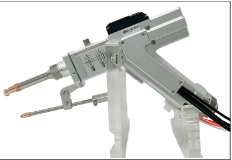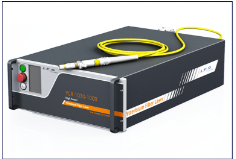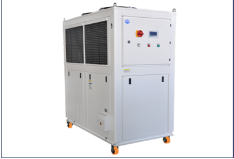The Complete Guide Handheld Laser Welder Machine
First, we need to know the handheld laser welder machine's purpose. Simply put, laser welding uses a laser beam to melt and solidify a material joint instantly with the powerful heat generated by the laser beam to achieve the purpose of welding. The entire welding process takes only a few seconds. You can use the welding machine for electricity, seam, lap, butt jointing, and other processes. Laser welding is used in many industries and is an efficient operation to achieve high quality spot welding.
Features of handheld laser welder
- Fast speed
The laser is so fast that it is difficult to capture with the naked eye, and the whole welding process is very fast. - Good results
There is no waste of material during the welding process and no deformation after welding, so there is little impact on the material. You can also weld materials that are usually difficult to weld manually, such as titanium alloys. - Environmentally friendly
The welding process does not generate dust that is harmful to the environment. - Flexibility
The flexibility of operation makes it easy to weld even in complex positions.
Pros
The advantages of laser welding over conventional welding techniques are very obvious. Here are some of their benefits:
The high degree of automation
Exact welding positions, suitable for industries that require high welding precision
It saves labor and time
Less wasteful consumption of welding material
Cons
There are no obvious disadvantages to using a handheld laser welding machine. The most significant burden may be the high purchase cost, which is not easy for partners with an insufficient budget to buy a machine. And the machine also requires a certain amount of money for maintenance in the later stages of use. Secondly, purchasing the old version of the handheld laser welding machine requires a high level of skill for the operator.
History of handheld Laser Welding Machines
Before the 1970s, most of the lasers used at this time were ruby-pulsed lasers. These pulses and powers were relatively low so they could have used them more effectively. Later higher, power lasers appeared and became the primary choice for spot and seam welding of metallic materials.
At the end of the 20th century, more competent and efficient gas-shielded welding gradually appeared. This was when manual arc welding began to be phased out.
In the 1990s, more advanced welding machines, such as computer-aided design and machine automation, emerged. This was when our welding machines were primed. In the 30 years from the 1990s to 2023, machines developed very rapidly. Welding machines gradually diversified and became mainstream equipment in various industries.
Why use handheld laser welding machine
Welding technology is used in many industries, and to do the job faster and better, we need to choose some equipment to assist the operation. This is the main reason why welding machines are still being innovated.
Choosing a welding machine can save time to a great extent and increase efficiency. The most important thing is that it can greatly benefit the factory. Good welding results give your products a good competitive edge in the industry.
How to choose handheld fiber laser welding machine?
Technical Parameters
| Machine Model | Handheld fiber laser welding machine |
|---|---|
| Laser Power | 1000W 2000W 3000W(optional) |
| laser wave length | 1070 NM |
| Fiber length | Standard10M / Maximum 15M |
| Welding speed range | 0~120 mm/s |
| Cooling chiller | Industrial water chiller |
| Working environment temperature range | 15~35 ℃ |
| Welding thickness recommendations | 0.5-3mm |
| working voltage | 220 V |
What to consider before buying handheld laser welding machines
- Handheld laser welder price
Because many factors affect the price of handheld laser welders, such as brand, features, etc., your budget directly determines the range of machines to buy, and the price of the handheld laser welding machine is also a direct reason for your purchase. But you must be clear that not the higher price, the better machine. - Power
In general, the higher the power, the more expensive the price. - Configuration
You can choose a manual, automatic, or machine according to your needs. If you need to customize some additional features, you need to spend more money. - Brand
This is one of the things you need to pay attention to when buying a machine. This is because a handheld laser welding machine is costly and may even be very expensive. You may also encounter problems after the machine is used, which requires a lot of after-sales service and technology. Buy some big brands will have more guarantees in after-sales service. For example, our gweike engineers will be online 7 * 24 hours. If you can directly contact any problems in the process, the engineer will help you remotely control the situation. - Components
If your budget is low, it is recommended to prioritize better components, followed by the appearance, operation, and other features, because good parts for the later use of the machine are very critical.
What parameters should I check before using?
All usage parameter settings are clearly stated in your user manual. So we will cover only a few common parameters.
- Adjusting power
The higher the power, the more power it consumes and the more material it may waste. So choose a suitable welding power before you start welding. You can refer to the welding parameters table. - Beam diameter
It would help if you chose a laser beam with a diameter between 0.2 and 2 mm. - Pulse frequency
Too high a frequency will cause the metal to waste more energy, resulting in low welding efficiency. - Pulse waveform
Choose the suitable waveform for each metal material. Otherwise, energy will also be lost, resulting in poor welding results.
Fiber laser welding machine working principle
The handheld metal laser welding machine mainly reflects the laser light through the lens, and the metal absorbs the laser light to reach the melting point and then melts. After cooling, the materials are tightly bonded to each other.
Classification of handheld laser welding machines
Handheld laser welders can be classified according to their laser heads and lasers.
Classification by Laser
- Pulsed Laser
This type of laser welding is particularly suitable for welding thin metal materials, such as broken bracelets or rings. We achieve welded metal welding by setting the pulse width, frequency, and power of the laser peak, which can eliminate metal burning to a great extent. - Continuous Laser
This laser welding is mainly used to adjust the power by setting the average laser power and is ideal for welding large parts. This is the preferred method for fusing large metal materials such as stainless and carbon steel plates. However, the purchase cost of this type of machine is higher.
Classification by laser source
This is a common way of classifying our welding machines. Most people think of fiber, CO2, and Nd: YAG first, all of which have advantages and are suitable for different welding fields.
- Fiber laser welding machine
This is the best choice of welding machine for welding metal materials. These machines have high power and fast speed suitable for welding metal parts. It gives you great welding accuracy and reliability. - CO2 laser welding machine
This is the best choice if you need to weld non-metallic materials. - Nd: YAG Laser Welder
This type of welder is suitable for home use or small stores. Its power is generally low, and it cannot weld the material afterward, so we can easily weld small parts we encounter daily.
Regardless of how it is classified, you must first define the type of welder suitable for you before you buy it. This will be very beneficial for your business to proceed.
Components and functions of handheld fiber laser welding machine
Take geweike's handheld laser welder as an example. Its composition mainly includes three major parts: laser welding head, laser source, and water chiller. Their respective functions are as follows.
Laser Welding Head

- High efficiency and easy to use
- Protect modules for focus lens or calibration
- Quick and simple to use, the drawer-type lens mount
Laser Source

- GWEIKE's laser sources offer higher electro-optical conversion efficiency. Also, the reliability and modularity of the laser source are very competitive in the industry.
- Improved reflection function
- Easy post-maintenance of the machine
- Reduced downtime
Water Chiller

- With double cooling effect is better
- High temperature will immediately alarm
- Machine protection
Handheld laser welding machine specifications
Laser Power Density
This is one of the most important characteristics that affect laser processing. The high power density allows the material to heat up and melt instantly, making the metal welding process faster.
Pulse Waveform
The pulse waveform is a key consideration in welding, especially plate welding. This pulse waveform directly affects the temperature of the metal surface. Some of the energy on the surface of the metal is lost at the peak of the pulse.
Pulse Width
Pulse width is a basic indicator to clarify material wastage in welding. It can have a direct impact on your production costs.
Defocusing
When the focal plane is below a workpiece, negative defocusing is possible. Higher penetration is possible. The power density distribution is uniform across all planes except the one near the laser focal point.
Geometric optics theory states that the power density of the corresponding planes will be approximately equal if the positive and the negative defocusing planes are located at the same distance from the welding plane. In practice, however, the form of the melt pool can be quite different.
Advantages of handheld laser welding machine
We can see from the increasing sales of handheld metal laser welding machines every year that its advantages are very obvious. It is used in the military, aviation, decoration, and many other industries.
- Easy operation of handheld laser welding machine
- Tight and clean weld seam without deformation
- Stable laser output ensures consistent weld seam
- Save workforce and time
- Can weld very deep seams
- Safe to use
Application of handheld laser welding machine
Handheld laser welding has made the manufacture of many metal parts easier. The following is a brief list of applications for welding machines in various industries:
Automotive
Laser welding is involved in manufacturing 15% of the automotive industry. This is especially true for the manufacture of automotive chassis and bodies. This is one of the industries where the number of handheld laser welders for sale is relatively large.
Jewelry
We often see mini handheld laser welders in jewelry stores, mainly used to repair broken bracelets or other jewelry. And almost all jewelry production uses handheld fiber laser welding machines for production.
Medical
As medical aid, we see handheld laser welders in a very small part of the hospital. Although their presence is small, they are essential for many medical tasks.
Pcb board
Can solder many electronic components and circuits of circuit boards without welding machines. The manufacturing and repair of cell phones, computers, and smart appliances all use soldering machines.
Factors affecting the quality of laser welding
You may encounter unsatisfactory welding results without operating experience or first use after replacing a new machine. Many factors affect the laser welding effect. Besides setting parameters, you know other reasons?
Machine
This is an important factor that affects the welding effect. If you buy a machine unsuitable for welding this material, even if the perfect parameters are set, it will not produce the desired effect. At the same time, metal in the welding process is some laser reflection. If the welding effect is not satisfactory, we can apply a layer of graphite to the surface of the metal material.
Welded Materials
If the welding seam is too big or cannot align the light spot and the welding seam, it will lead to poor welding effects. So the chuck needs to be carefully tightened before welding to achieve the best result.
TIG welding VS MMA welding VS MIG welding
- TIG welding:
This is the handheld laser welding machine we are talking about in this article. It is the primary choice for many companies nowadays because of its easy operation and small deformation. And the surface after welding is smooth. No need to polish it again. However, the purchase price of the machine is generally higher.
The first time you use it, you need to watch the operation video and set the parameters in advance. People who have never touched a welding machine can quickly get started after a few hours of training. - MMA welding:
SMAW or MMAW is very wasteful to weld material, and the surface needs to be smooth after welding and polished again. However, it is generally cheaper. - MIG welding:
High heat input, not suitable for thin welding plates. And challenging to operate with low efficiency.
Conclusion
The above is a summary of knowledge about handheld laser welding machines. If you have any questions, you can consult our online customer service. Welcome to call!

